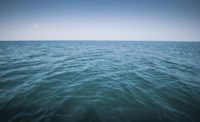The sinking of a fishing vessel off Portland, Maine last year sounds very much like a scene from the Hollywood movie, “A Perfect Storm," starring George Clooney and Mark Wahlberg. Fortunately, the real-life crew survived, unlike their cinematic counterparts – although their rescue was not without some tense moments.
In both cases, however, a major factor in the calamity which endangered crew members was the captain’s decision not to return directly to port despite extreme weather conditions.
Gale-force winds
In the November 14 incident, the Aaron & Melissa II sank approximately 70 miles southeast of Portland after it flooded while heading to fishing grounds during a storm with gale-force winds.
In its just-released report on the incident, the National Transportation Safety Board (NTSB) said that when attempt to “dewater” the vessel proved unsuccessful, the four crew members were forced to abandon ship and jump into an inflatable life raft. They were later rescued by a U.S. Coast Guard helicopter. One deckhand received minor injuries.
Approximately 3,000 gallons of fuel and lube oil were discharged. The loss of the vessel was estimated at $650,000.
Probable cause
The NTSB determined that the probable cause of the flooding and sinking of the fishing vessel Aaron & Melissa II was the captain’s decision not to return to port in the inclement weather, combined with the clogged bilge system, which prevented the crew from dewatering the flooded lazarette, an area near or aft of the cockpit used for storage.



